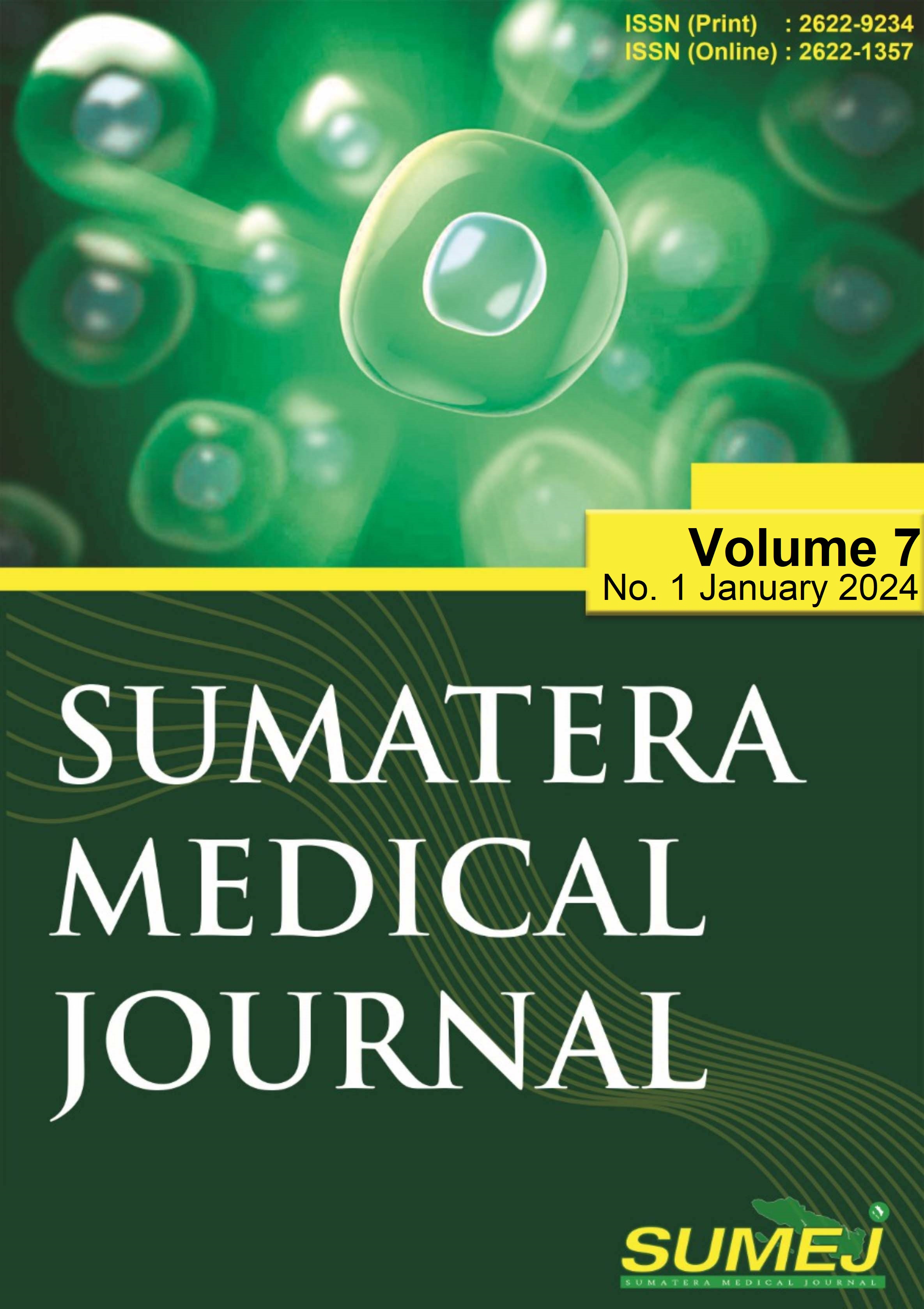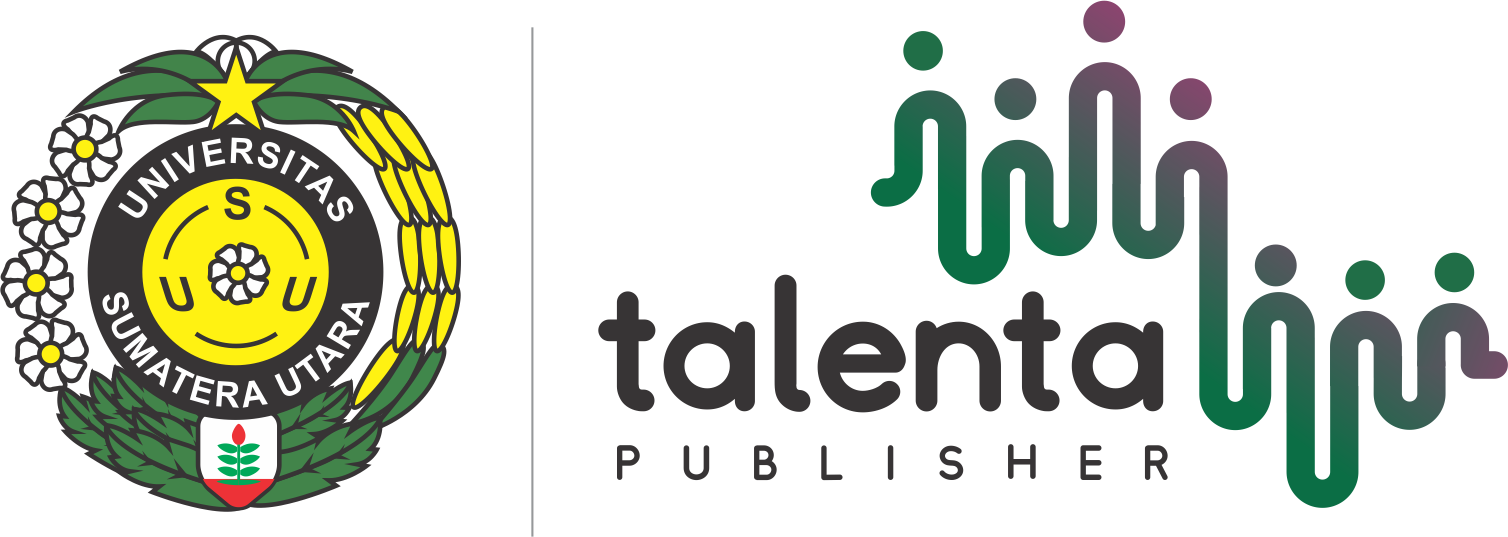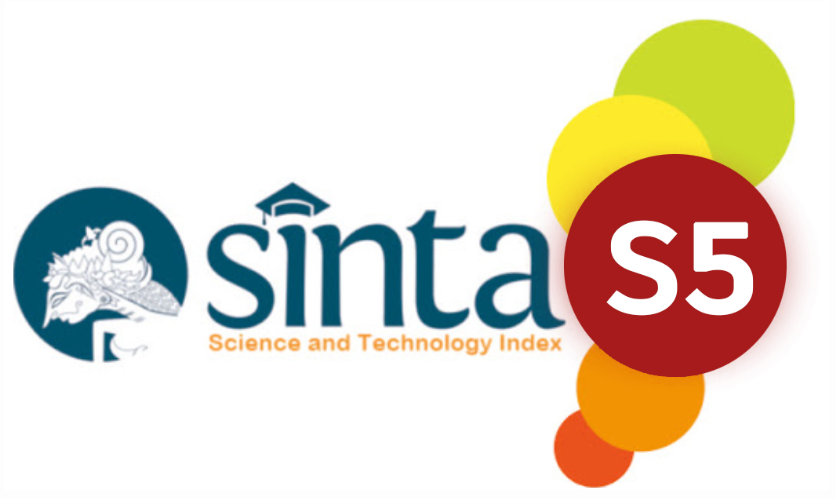Review Article: Characteristics of Ovarian Cancer Across Age, Epithelial Histopathology, and Stages
DOI:
https://doi.org/10.32734/sumej.v7i1.5651Keywords:
age, epithelial histopathology, ovarian cancer, patients characteristics, review articleAbstract
Background: Ovarian cancer is a disease that has a high mortality rate, it has 185 thousand deaths in 2018. In Indonesia, it is estimated that there are 100 cancer patients per 100 thousand people. Ovarian cancer is a malignancy with no specific symptoms, as a result advanced stage is commonly found at diagnosis and there is no effective screening test to date. However, genetic factors have been found to play a role in this disease. Aims: The aim of this study is to find out the characteristics of ovarian cancer patients. Methods: This research uses a review article research design, with a narrative type. Data collection was taken from a collection of journals sourced from Pubmed and met the inclusion and exclusion criteria set by the author and then summarized. Six journals that included the characteristics of ovarian cancer patients are included in this review article. Results: According to the six journals, the mean age is 54 years old, the most stage found is stage 3, and the most epithelial histopathology found is serous. Conclusion: According to the six journals that were reviewed, the characteristics of ovarian cancer patients based on age, stage, and epithelial histopathology were found to be consistent with the theory that has been established.
Downloads
References
Dictionary of Cancer Terms. National Cancer Institute. Available from: https://www.cancer.gov/publications/dictionaries/cancer-terms/def/ovarian-cancer. Accessed on March 16, 2020.
Schorge JO, McCann C, Del Carmen MG. Surgical Debulking of Ovarian Cancer: What Difference Does It Make?. Reviews in Obstretics & Gynecology. 2010;3(3):111–7.
Population Fact Sheets, The Global Cancer Observatory 2018. Available from: http://gco.iarc.fr/today/data/factsheets/cancers/25-Ovary-fact-sheet.pdf. Accessed on March 7, 2020.
Roett MA, Evans P. Ovarian Cancer: An Overview, American Family Physician. 2009;80(6):609–16.
Huang X, Shen C, Zhang Y, et al. Association between TAB2 Gene Polymorphisms and Epithelial Ovarian Cancer in a Chinese Population, Disease Markers. 2019.
Yoshida A, Tavares BVG, et al. Clinical Features and Management of Women with Borderline Ovarian Tumors in a Single Center in Brazil, The Brazilian Journal of Gynecology and Obstetrics. 2019;41(3)
Kim SI, Song M, Hwangbo S, et al. Development of Web-Based Nomograms to Predict Treatment Response and Prognosis of Epithelial Ovarian Cancer, Cancer Research and Treatment. 2019;51(3):1144–55.
Wolf D, Fiegl H, Zeimet AG, et al. High RIG-I expression in ovarian cancer associates with an immune-escape signature and poor clinical outcome. International Journal of Cancer. 2019;146.
Perumal J, Mahyuddin AP, Balasundaram G, et al. SERS-based detection of haptoglobin in ovarian cyst fluid as a point-of-care diagnostic assay for epithelial ovarian cancer. Cancer Management and Research. 2019;11:1115–24.
Xiong S, Mhawech-Fauceglia P, Tsao-Wei D, et al. Expression of the luteinizing hormone receptor (LHR) in ovarian cancer, BMC Cancer. 2019;19.
Hoffman BL, Schorge JO, Bradshaw KD, Halvorson LM, Schaffer JI, Corton MM. Williams Gynecology, 3rd ed. USA: McGraw-Hill Education. 2012.
Busmar B. Onkologi Ginekologi Edisi Pertama. Jakarta: PT Bina Pustaka Sarwono Prawirohardjo. 2006.
Downloads
Published
How to Cite
Issue
Section
License
Copyright (c) 2024 Sumatera Medical Journal

This work is licensed under a Creative Commons Attribution-ShareAlike 4.0 International License.
The Authors submitting a manuscript do so on the understanding that if accepted for publication, copyright of the article shall be assigned to Sumatera Medical Journal (SUMEJ) and Faculty of Medicine as well as TALENTA Publisher Universitas Sumatera Utara as publisher of the journal.
Copyright encompasses exclusive rights to reproduce and deliver the article in all form and media. The reproduction of any part of this journal, its storage in databases and its transmission by any form or media, will be allowed only with a written permission from Sumatera Medical Journal (SUMEJ).
The Copyright Transfer Form can be downloaded here.
The copyright form should be signed originally and sent to the Editorial Office in the form of original mail or scanned document.











